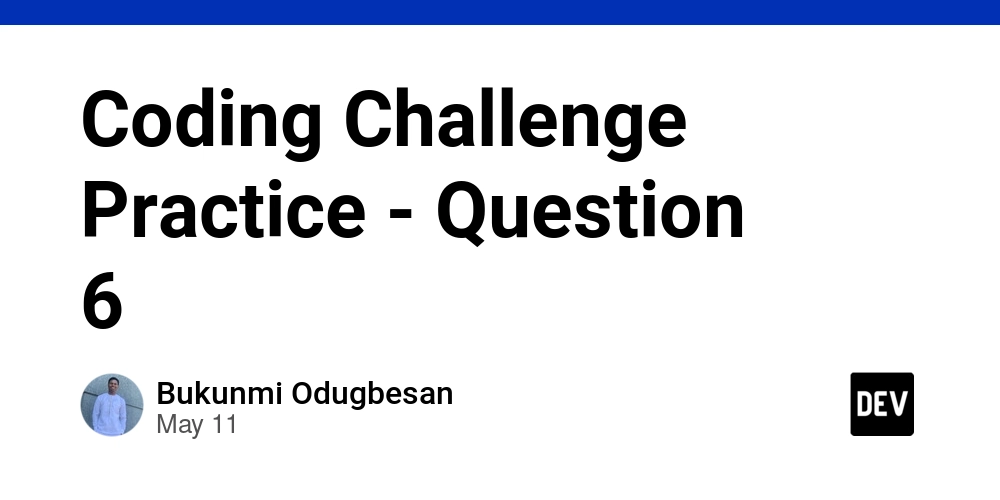3 Essential Steps to Navigate a Developer’s Resignation Smoothly
When a developer resigns, it can send ripples through a team, affecting project timelines, morale, and institutional knowledge. How organizations handle this transition can determine whether the departure becomes a stumbling block or a stepping stone for growth. Here are three critical steps to ensure continuity, preserve knowledge, and maintain team cohesion. 1. Conduct a Structured Exit Process Why it matters: A developer’s exit is an opportunity to gather insights and safeguard company assets. Exit Interviews: Schedule a candid conversation to understand their reasons for leaving. Ask about challenges they faced, tools they found ineffective, or team dynamics that could improve. This feedback can uncover systemic issues and reduce future turnover. Secure Access: Revoke system permissions (Git repositories, cloud services, databases) immediately after departure. Collaborate with IT to ensure no lingering access points. Formalize Handover: Request a handover document outlining ongoing tasks, project statuses, and key contacts. Clarify deadlines and priorities to ease the transition. Pro Tip: Approach the exit with empathy—maintaining a positive relationship can turn departing employees into lifelong advocates. 2. Prioritize Knowledge Transfer Why it matters: Developers often hold undocumented expertise critical to projects. Document Everything: Encourage the departing developer to document codebases, workflows, and “tribal knowledge.” Use platforms like Confluence or Notion to centralize this information. Shadowing Sessions: Pair the developer with teammates for hands-on knowledge transfer. Focus on complex systems, debugging techniques, or unique configurations. Code Reviews: Conduct walkthroughs of their recent contributions to ensure the team understands logic, dependencies, and potential pitfalls. Example: “When Maria left, her detailed API integration notes saved us weeks of guesswork,” recalls a tech lead at a SaaS startup. 3. Redistribute Work and Plan for the Future Why it matters: Sudden gaps in responsibility can lead to burnout or project delays. Reassign Tasks: Distribute responsibilities based on team strengths. Use this as a chance to upskill junior members or cross-train colleagues. Temporary Adjustments: Consider short-term contractors or adjusting deadlines to manage workloads realistically. Refine Hiring Practices: Analyze if the resignation signals a need for role restructuring or better growth opportunities. Invest in mentorship programs to retain talent. Stat to Consider: Teams that redistribute tasks effectively post-resignation see a 30% faster recovery in productivity (Source: Harvard Business Review). Conclusion: A developer’s resignation isn’t just an endpoint—it’s a catalyst for improvement. By conducting thorough exits, preserving knowledge, and strategically reallocating work, teams can emerge stronger. Embrace these steps to foster resilience, ensuring your organization thrives even amid change. Final Thought: “The art of leadership is not just hiring well, but parting well. Every exit is a lesson in building a more adaptable team.” — Anonymous Tech Manager. By approaching resignations proactively, companies can mitigate disruptions and turn challenges into opportunities for growth. What steps will you implement first?

When a developer resigns, it can send ripples through a team, affecting project timelines, morale, and institutional knowledge. How organizations handle this transition can determine whether the departure becomes a stumbling block or a stepping stone for growth. Here are three critical steps to ensure continuity, preserve knowledge, and maintain team cohesion.
1. Conduct a Structured Exit Process
Why it matters: A developer’s exit is an opportunity to gather insights and safeguard company assets.
- Exit Interviews: Schedule a candid conversation to understand their reasons for leaving. Ask about challenges they faced, tools they found ineffective, or team dynamics that could improve. This feedback can uncover systemic issues and reduce future turnover.
- Secure Access: Revoke system permissions (Git repositories, cloud services, databases) immediately after departure. Collaborate with IT to ensure no lingering access points.
- Formalize Handover: Request a handover document outlining ongoing tasks, project statuses, and key contacts. Clarify deadlines and priorities to ease the transition.
Pro Tip: Approach the exit with empathy—maintaining a positive relationship can turn departing employees into lifelong advocates.
2. Prioritize Knowledge Transfer

Why it matters: Developers often hold undocumented expertise critical to projects.
- Document Everything: Encourage the departing developer to document codebases, workflows, and “tribal knowledge.” Use platforms like Confluence or Notion to centralize this information.
- Shadowing Sessions: Pair the developer with teammates for hands-on knowledge transfer. Focus on complex systems, debugging techniques, or unique configurations.
- Code Reviews: Conduct walkthroughs of their recent contributions to ensure the team understands logic, dependencies, and potential pitfalls.
Example: “When Maria left, her detailed API integration notes saved us weeks of guesswork,” recalls a tech lead at a SaaS startup.
3. Redistribute Work and Plan for the Future
Why it matters: Sudden gaps in responsibility can lead to burnout or project delays.
- Reassign Tasks: Distribute responsibilities based on team strengths. Use this as a chance to upskill junior members or cross-train colleagues.
- Temporary Adjustments: Consider short-term contractors or adjusting deadlines to manage workloads realistically.
- Refine Hiring Practices: Analyze if the resignation signals a need for role restructuring or better growth opportunities. Invest in mentorship programs to retain talent.
Stat to Consider: Teams that redistribute tasks effectively post-resignation see a 30% faster recovery in productivity (Source: Harvard Business Review).
Conclusion: A developer’s resignation isn’t just an endpoint—it’s a catalyst for improvement. By conducting thorough exits, preserving knowledge, and strategically reallocating work, teams can emerge stronger. Embrace these steps to foster resilience, ensuring your organization thrives even amid change.
Final Thought: “The art of leadership is not just hiring well, but parting well. Every exit is a lesson in building a more adaptable team.” — Anonymous Tech Manager.
By approaching resignations proactively, companies can mitigate disruptions and turn challenges into opportunities for growth. What steps will you implement first?














































































































































































![[The AI Show Episode 156]: AI Answers - Data Privacy, AI Roadmaps, Regulated Industries, Selling AI to the C-Suite & Change Management](https://www.marketingaiinstitute.com/hubfs/ep%20156%20cover.png)
![[The AI Show Episode 155]: The New Jobs AI Will Create, Amazon CEO: AI Will Cut Jobs, Your Brain on ChatGPT, Possible OpenAI-Microsoft Breakup & Veo 3 IP Issues](https://www.marketingaiinstitute.com/hubfs/ep%20155%20cover.png)

























































































































![Rust VS Go VS TypeScript – which back end language is for you? With Tai Groot [Podcast #176]](https://cdn.hashnode.com/res/hashnode/image/upload/v1750974265013/73f79068-0087-4c39-8a8b-feea8cac873b.png?#)



















































































































.jpg?width=1920&height=1920&fit=bounds&quality=70&format=jpg&auto=webp#)
























_Michael_Burrell_Alamy.jpg?width=1280&auto=webp&quality=80&disable=upscale#)





























































































































































































